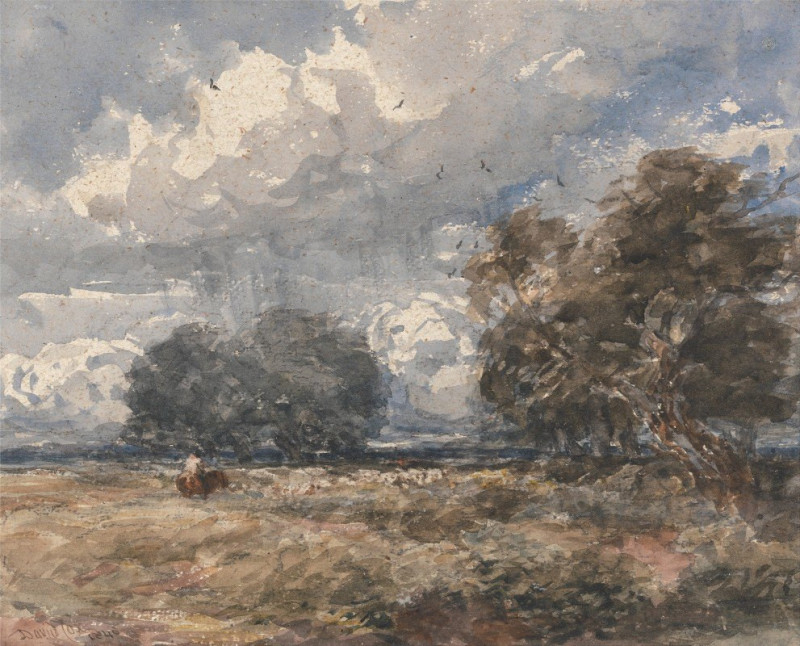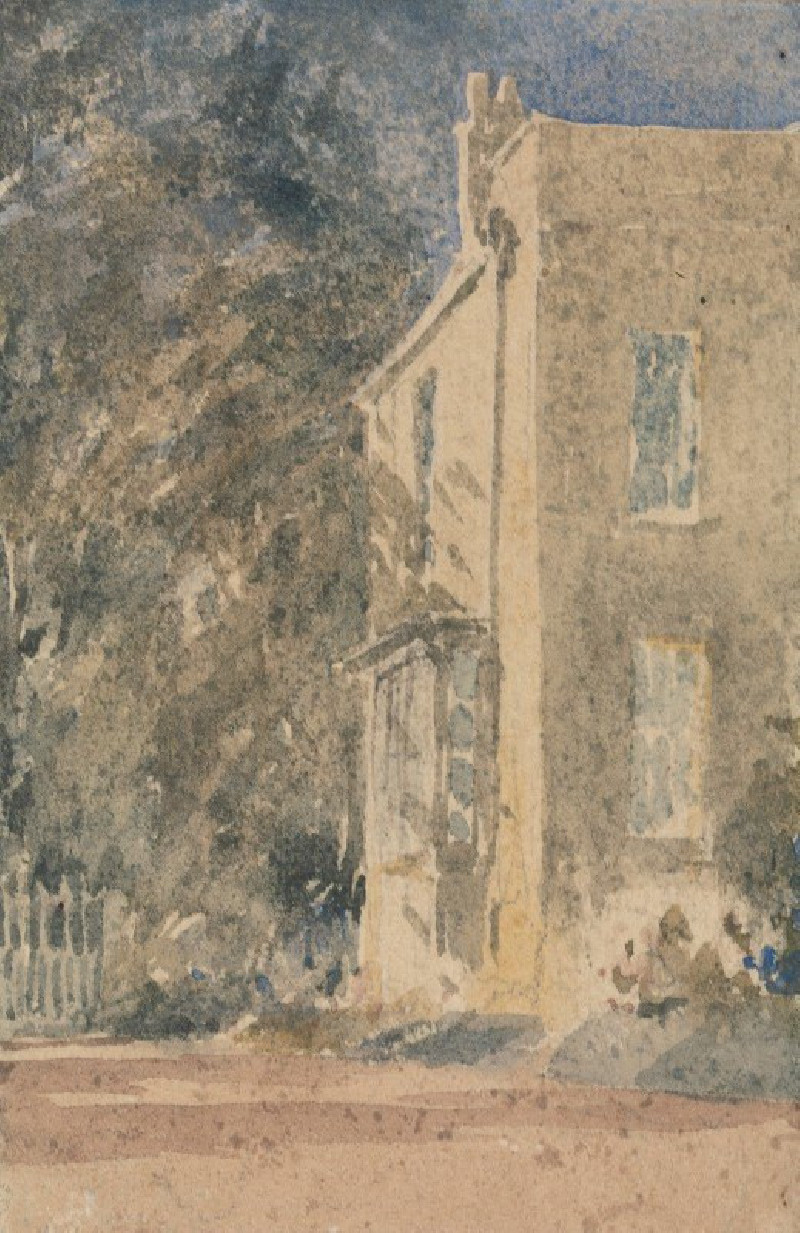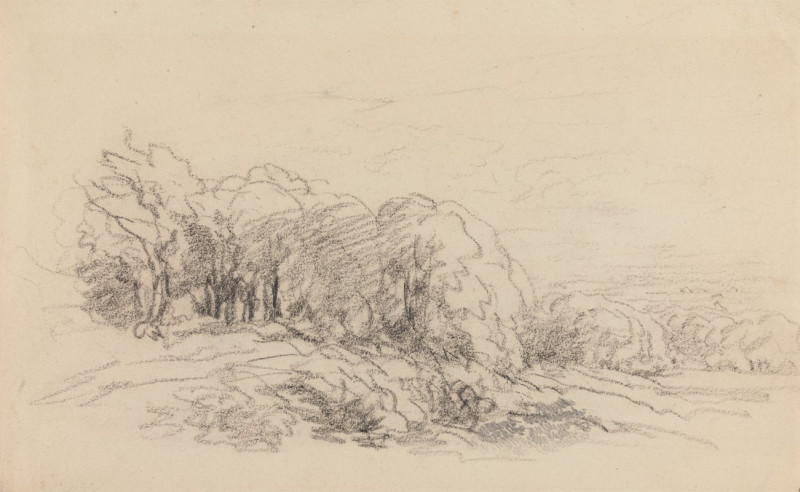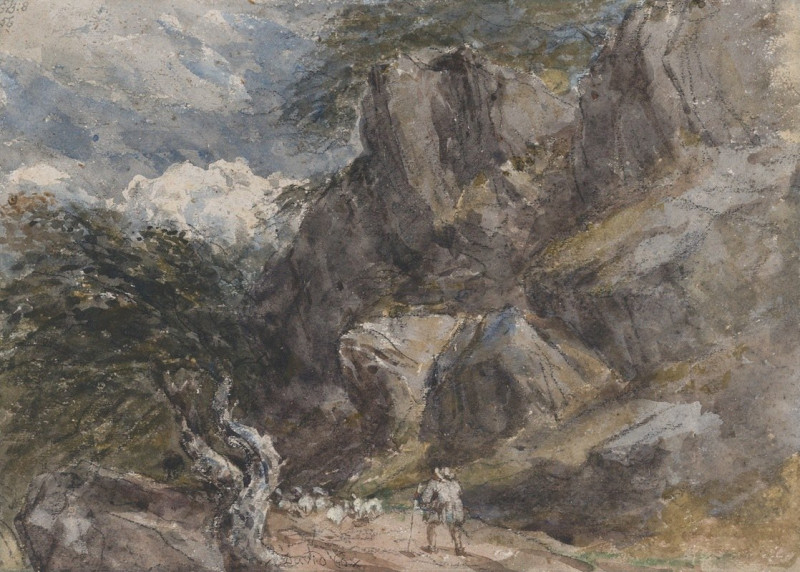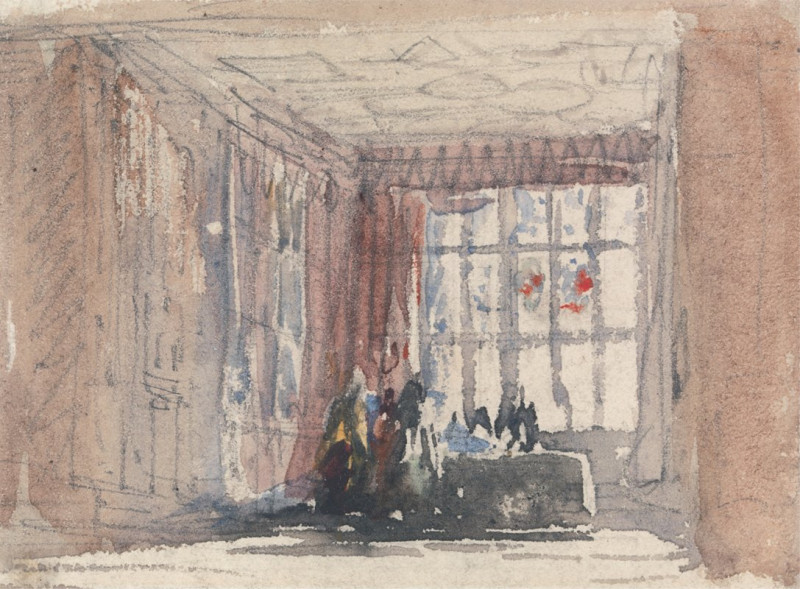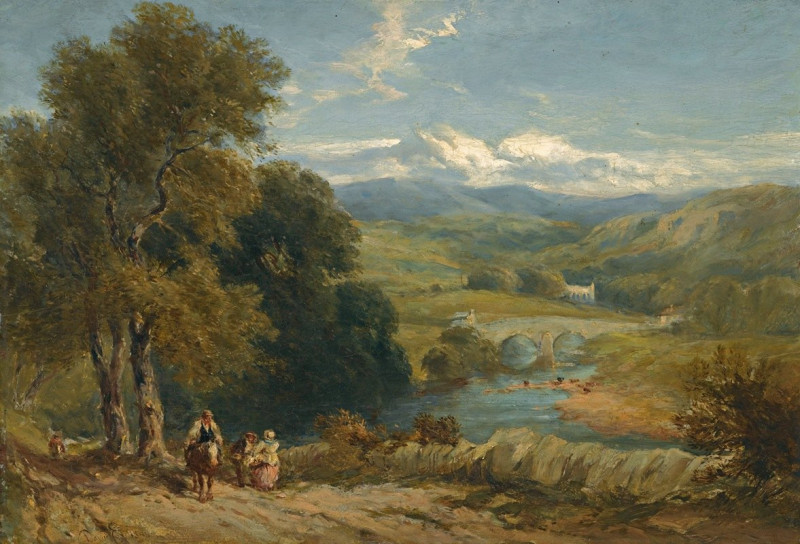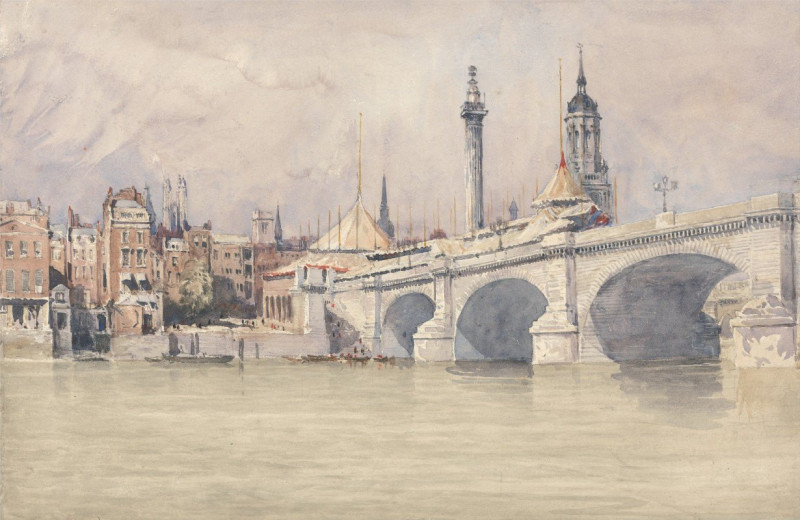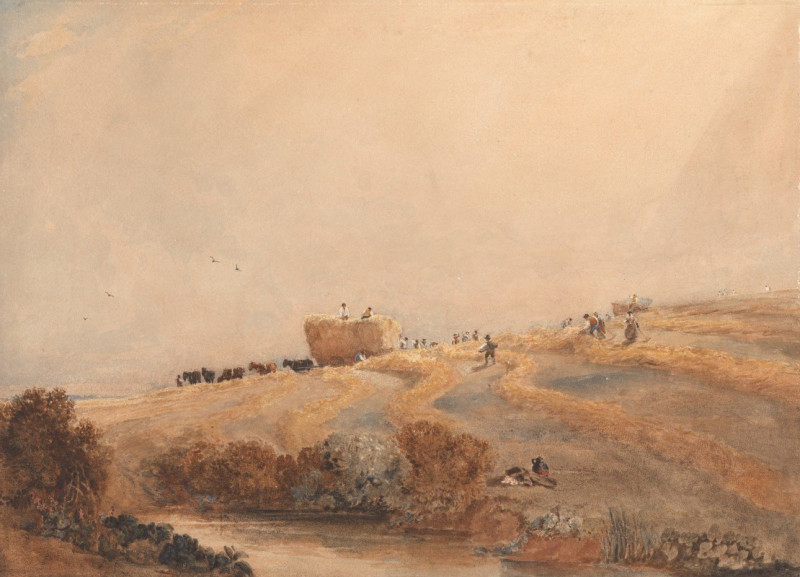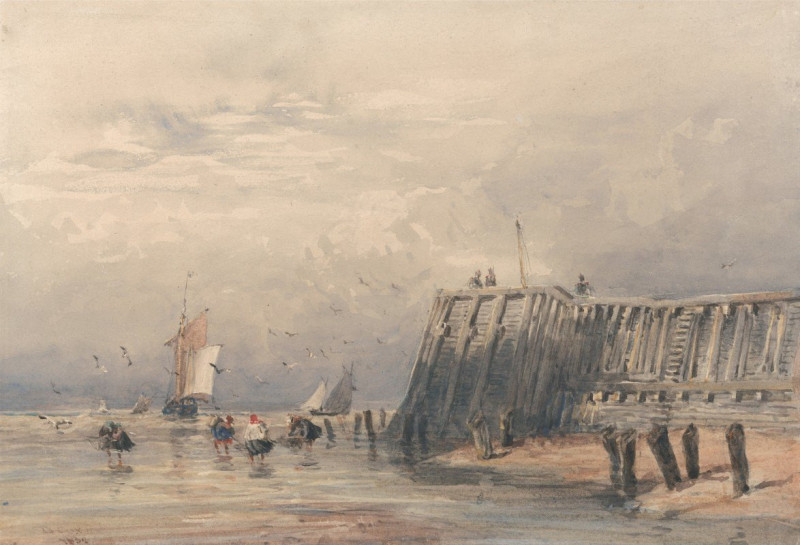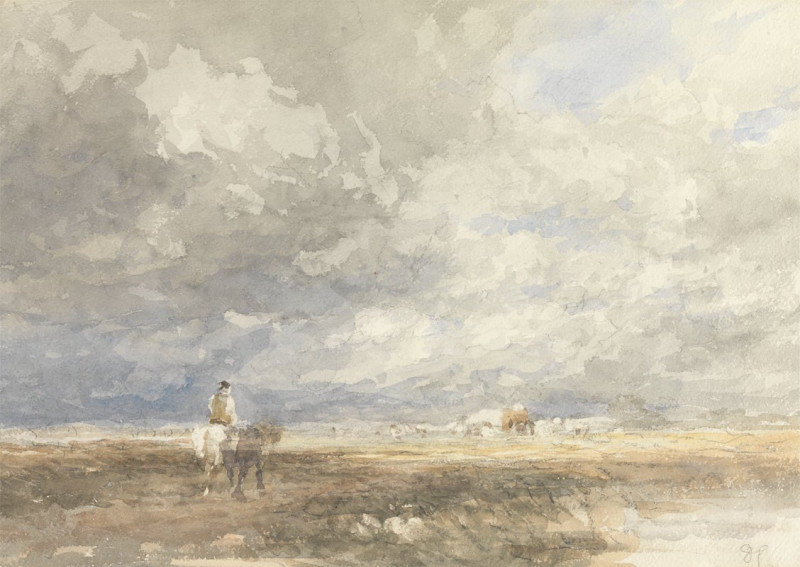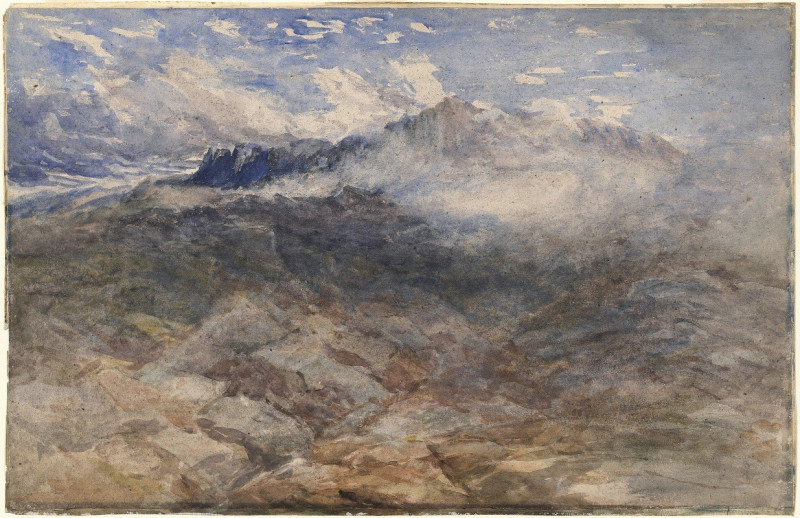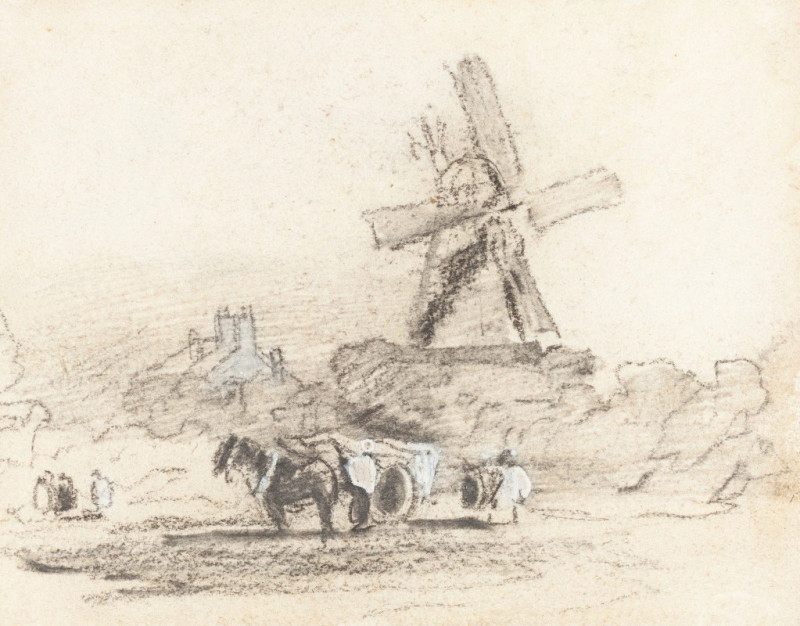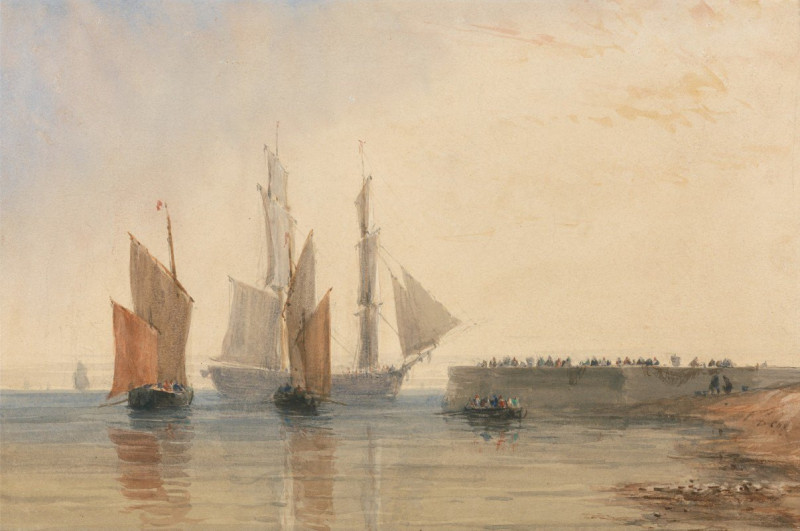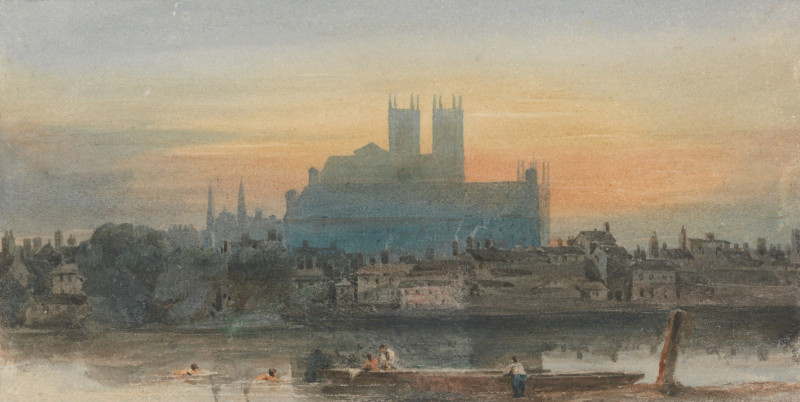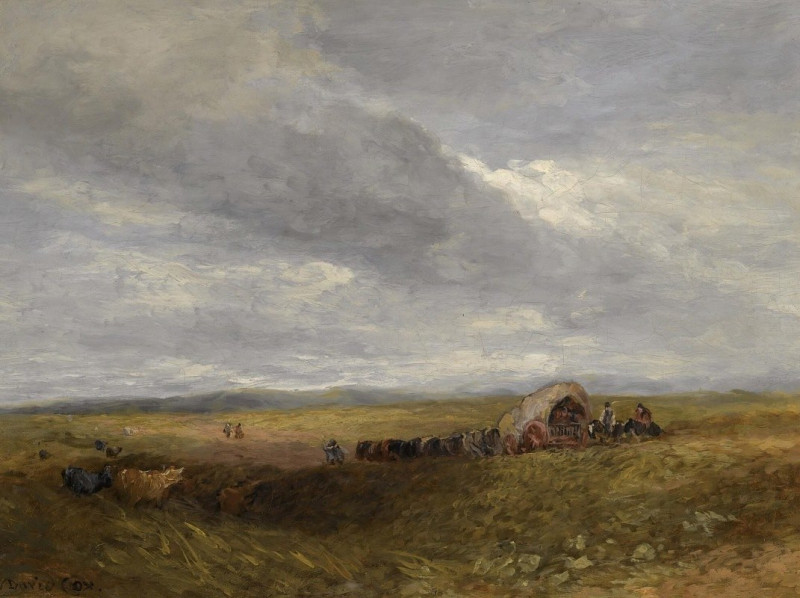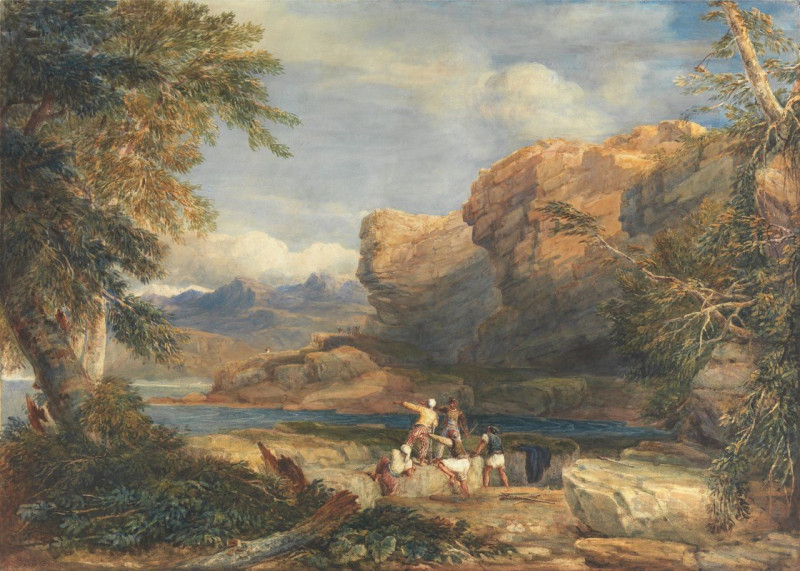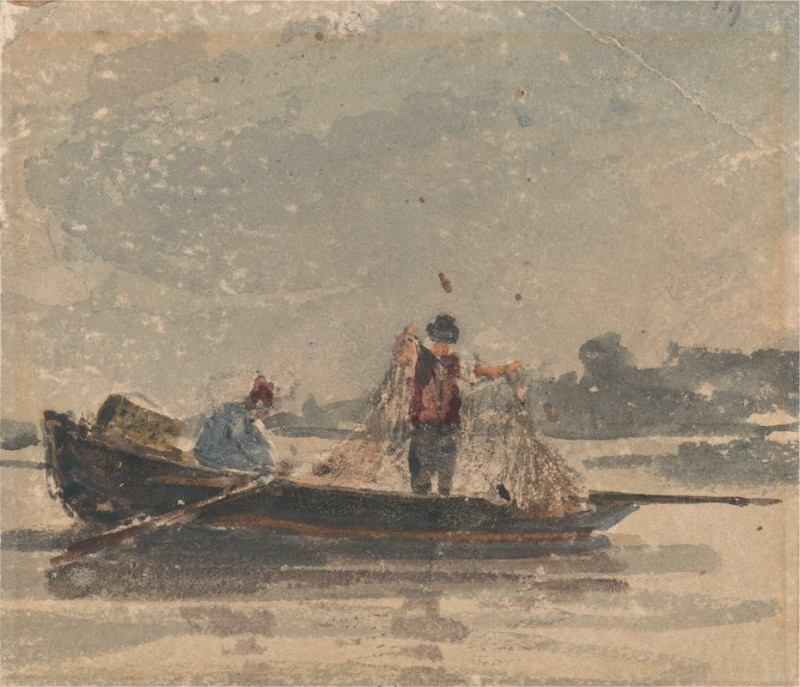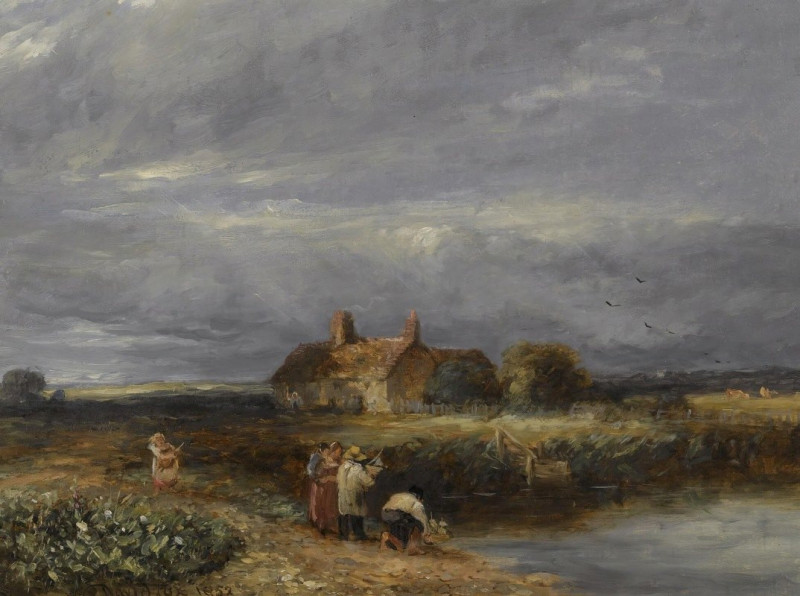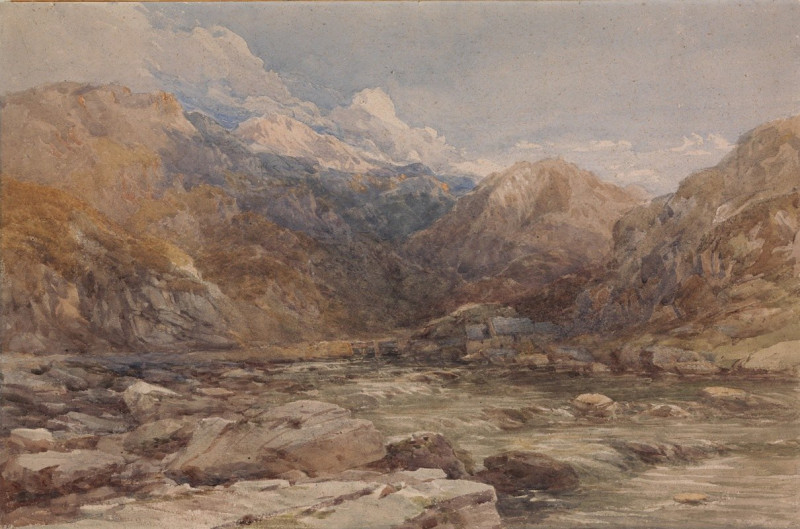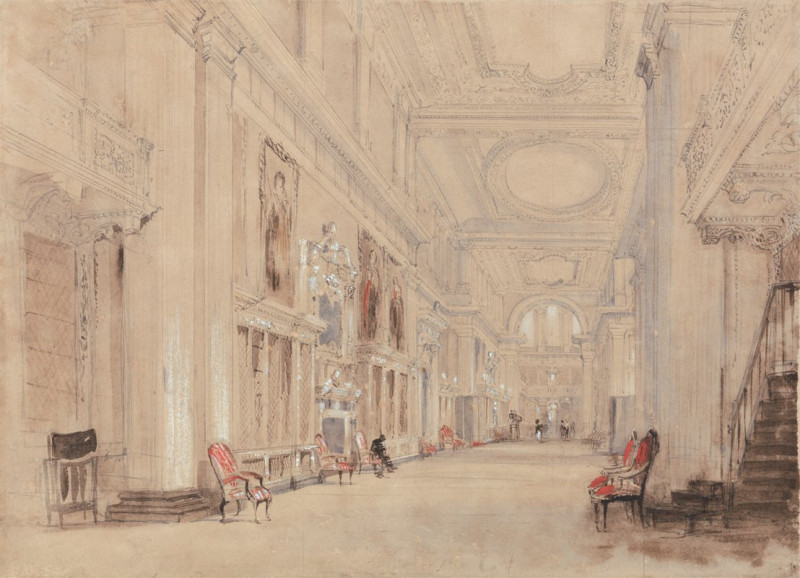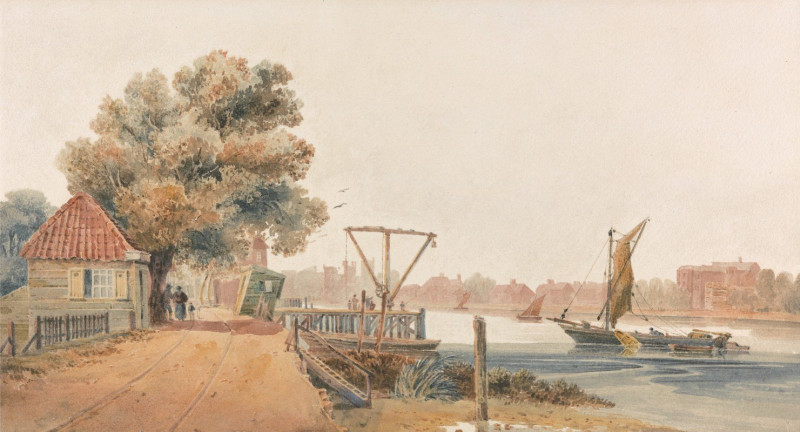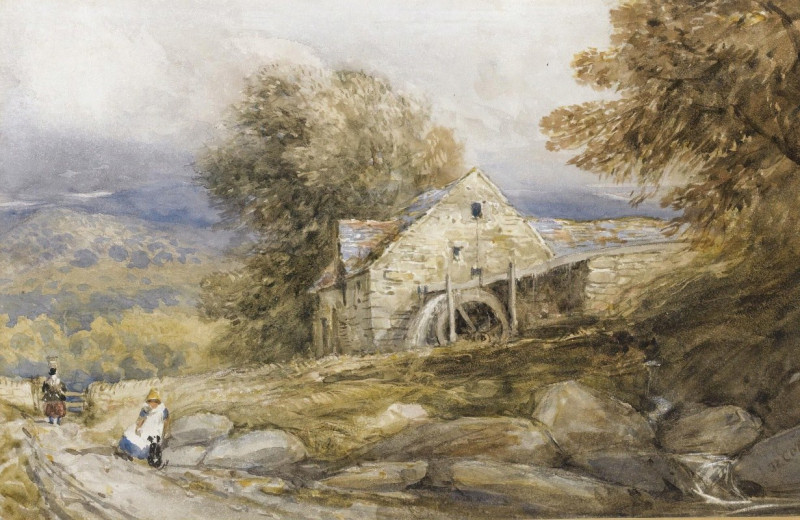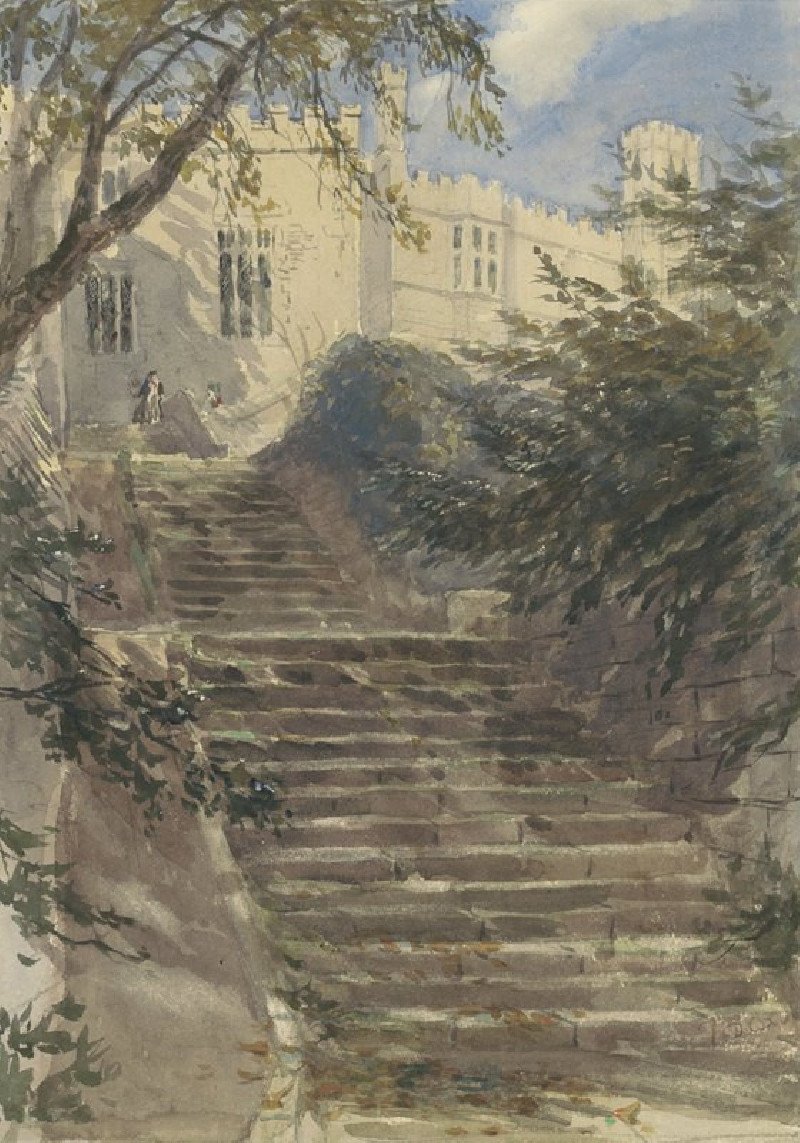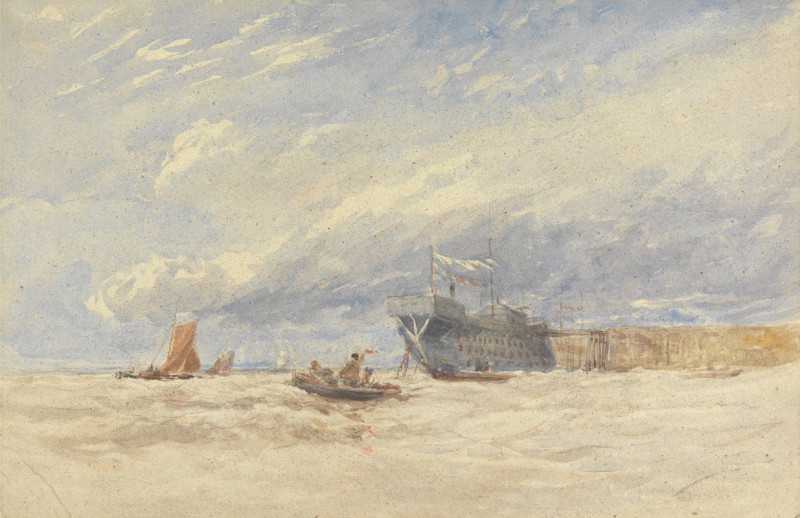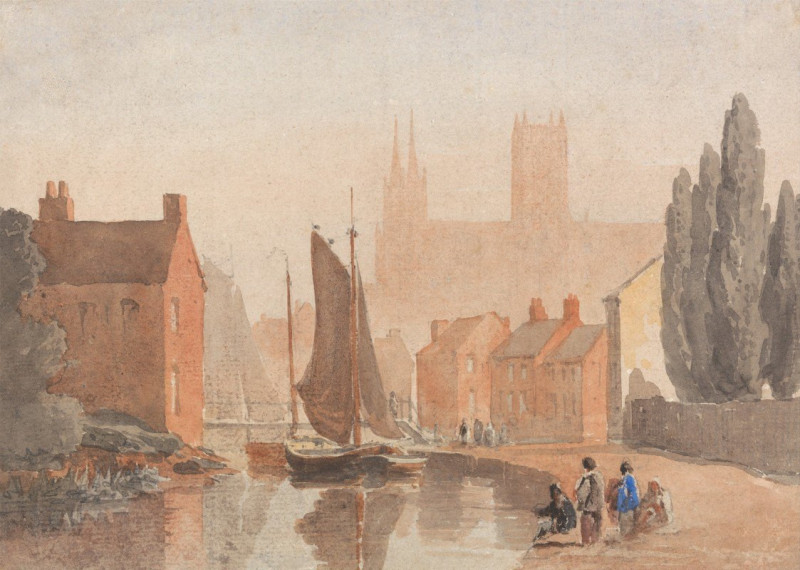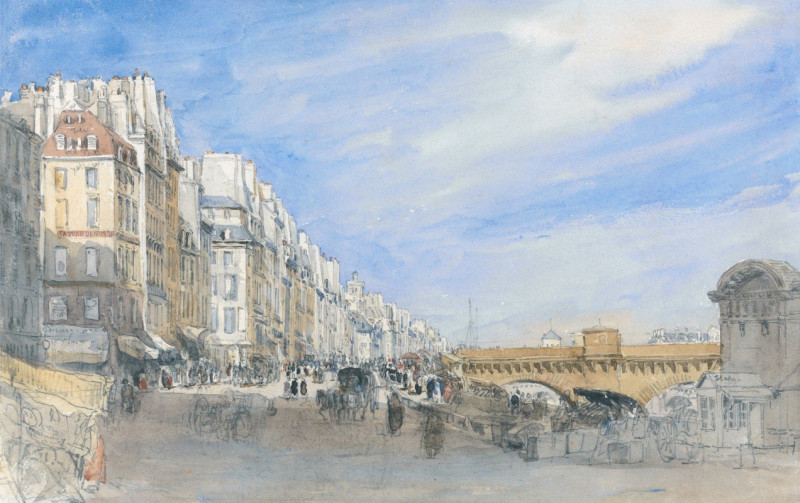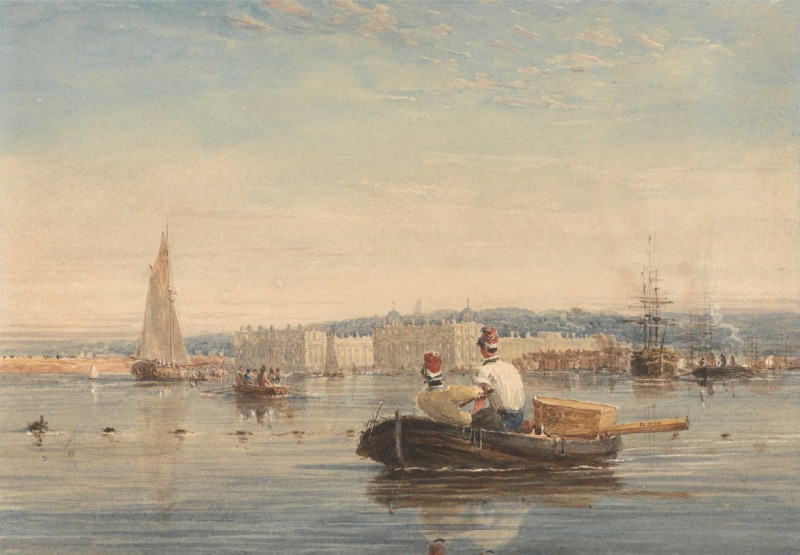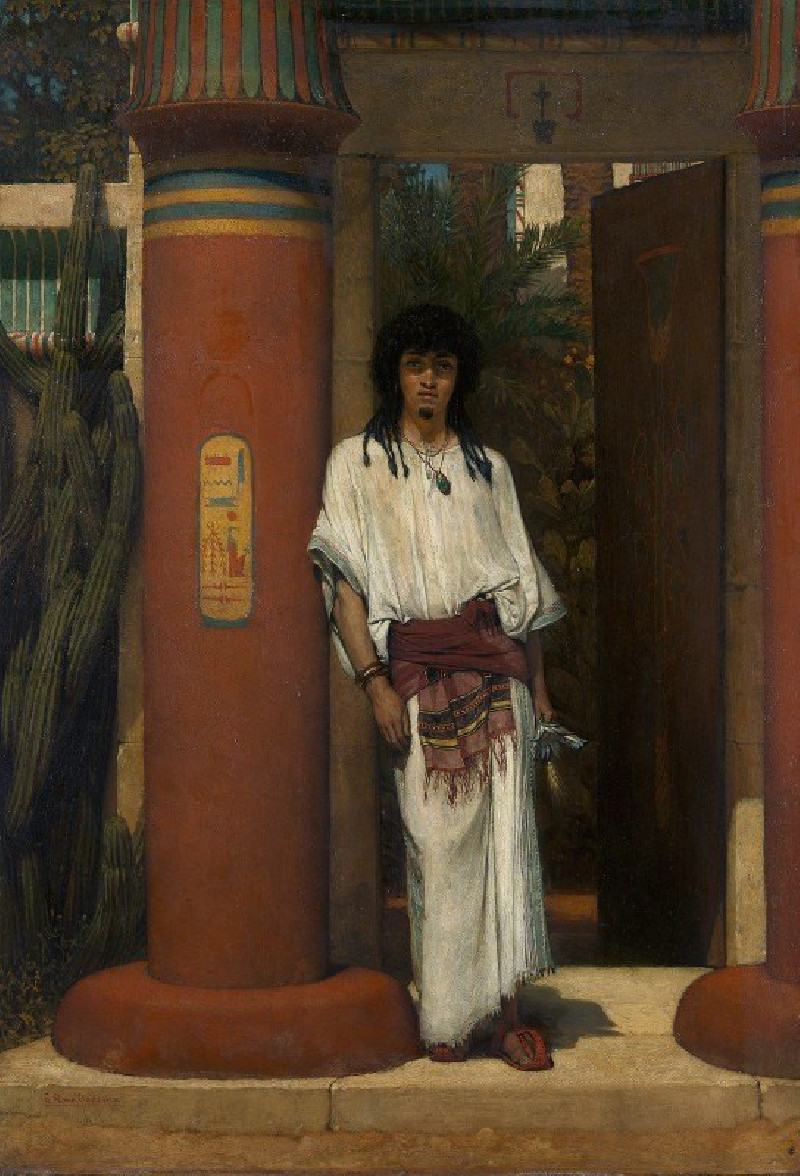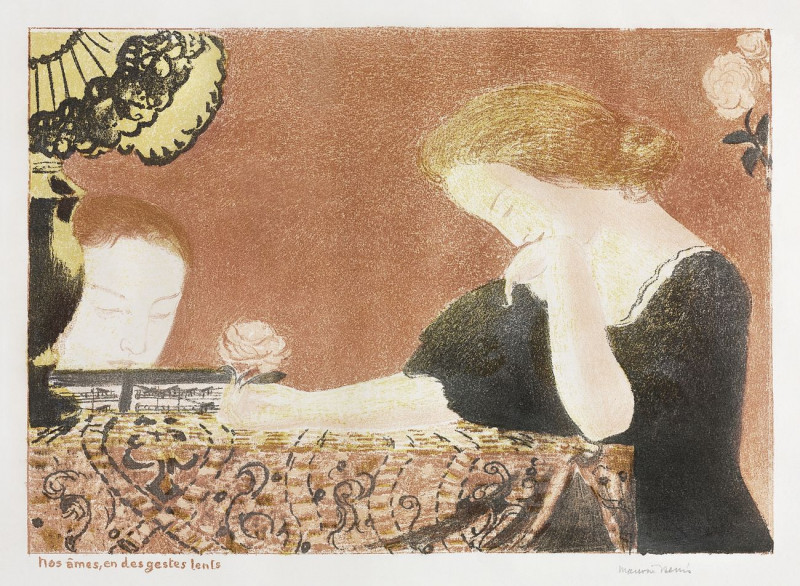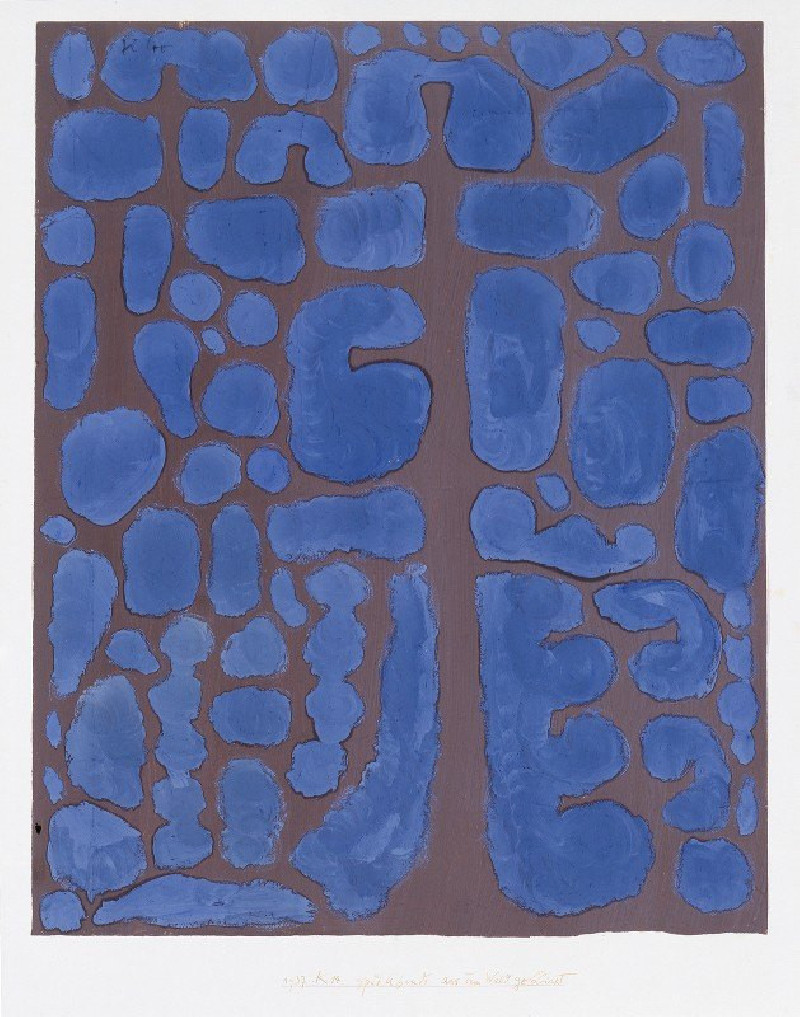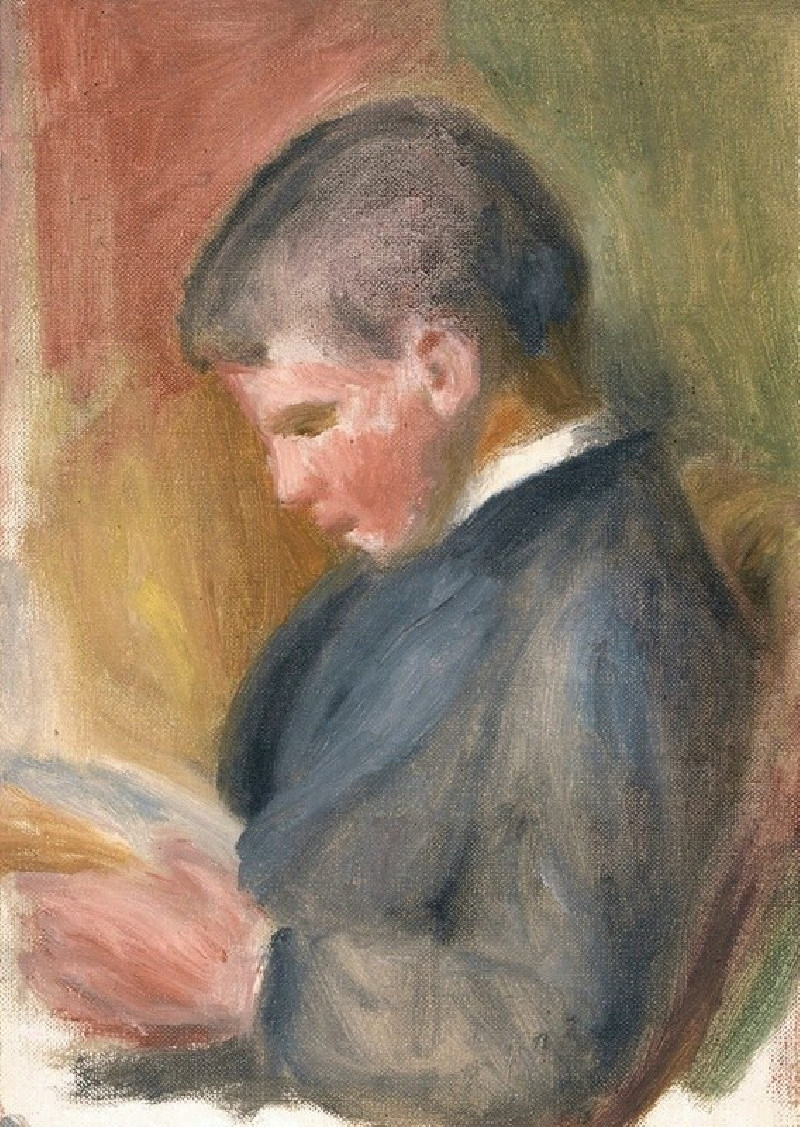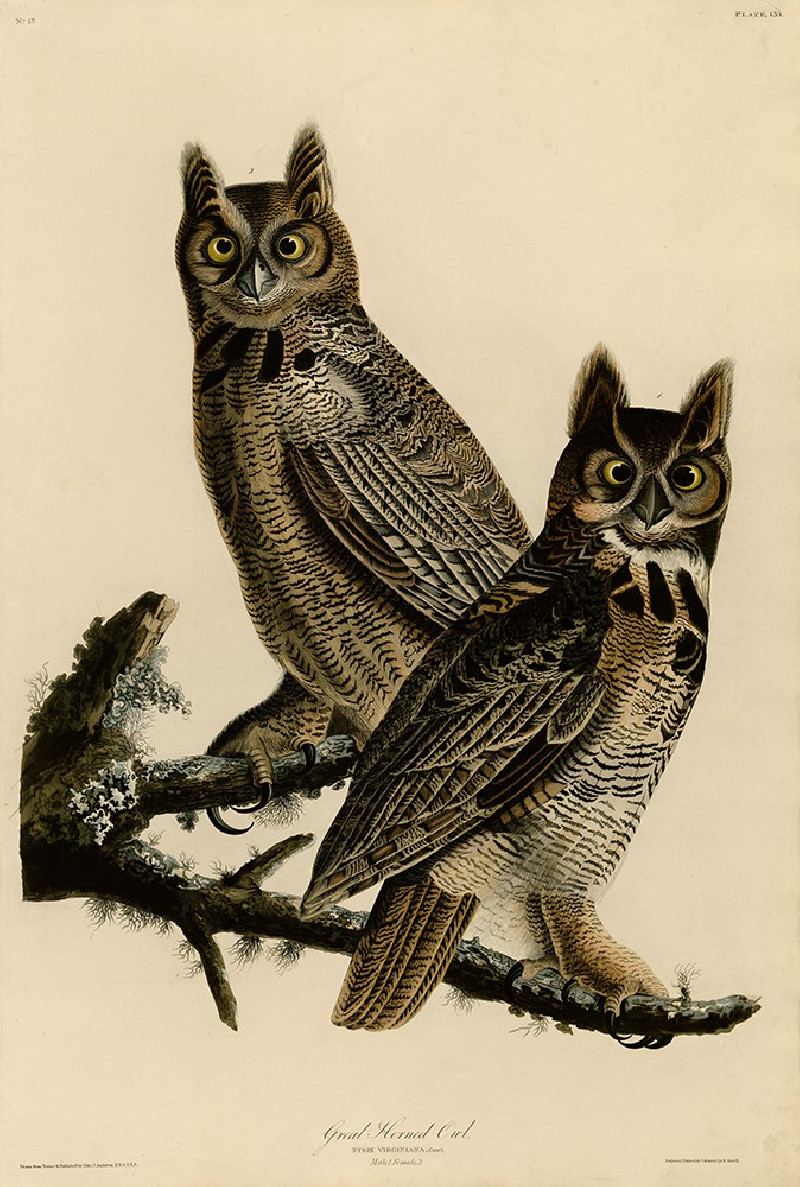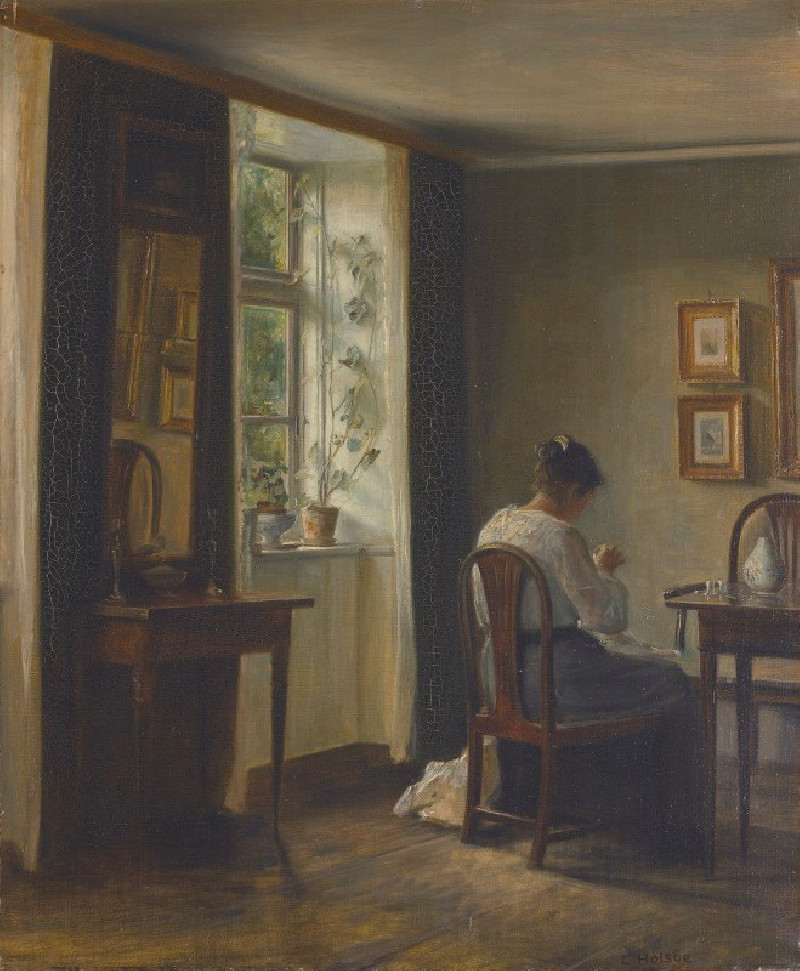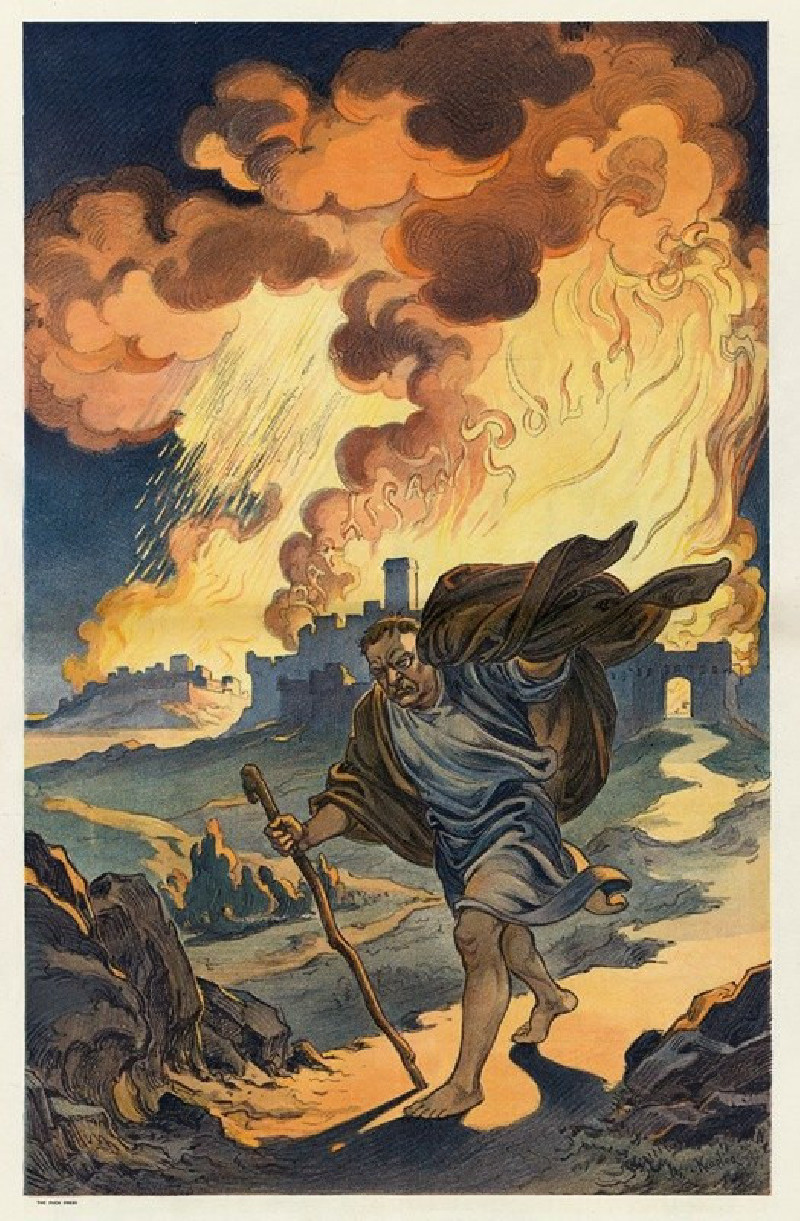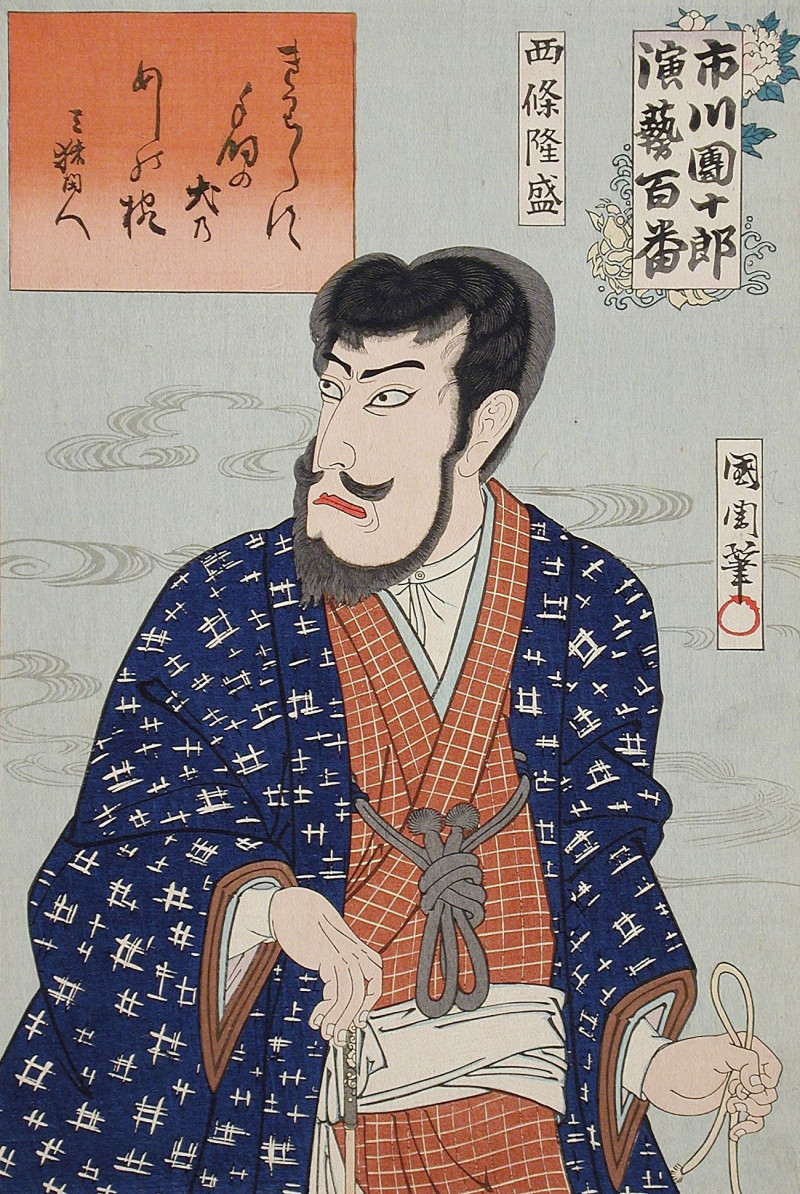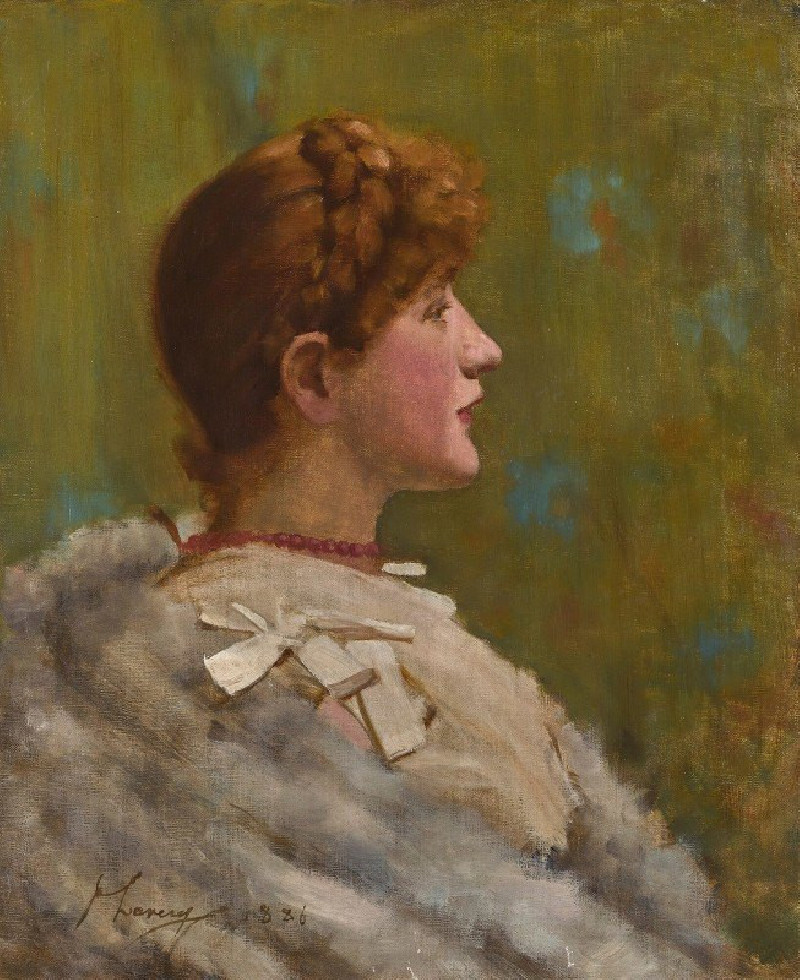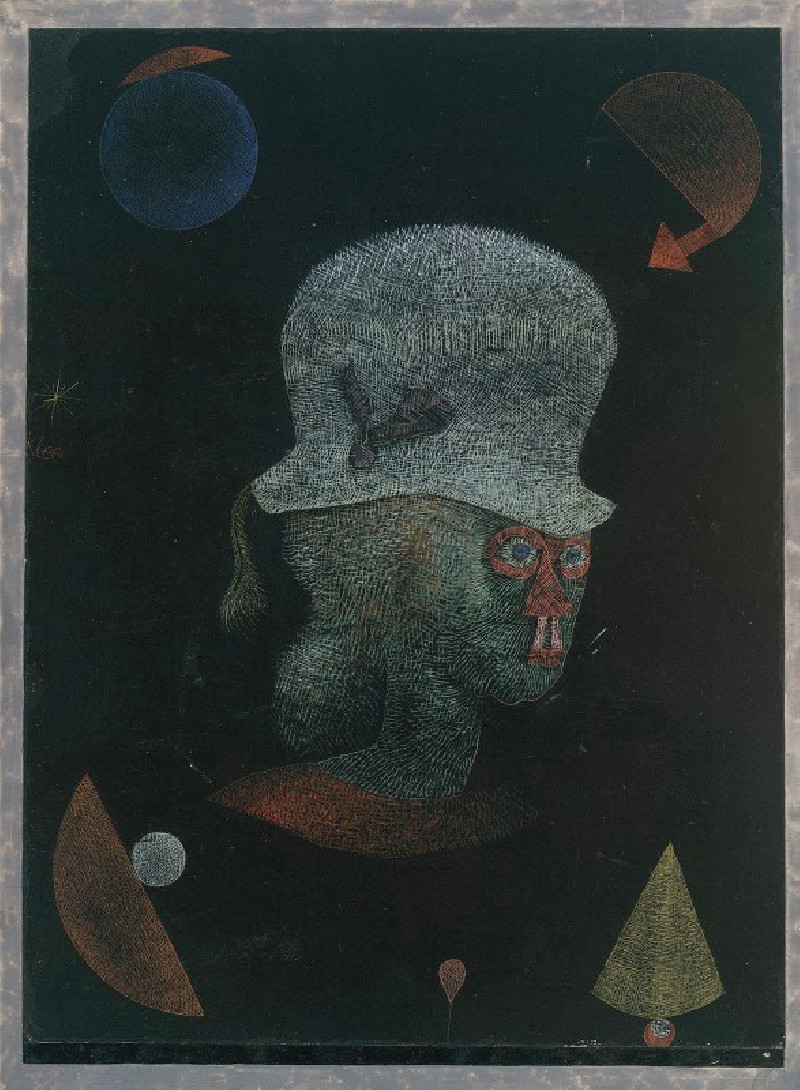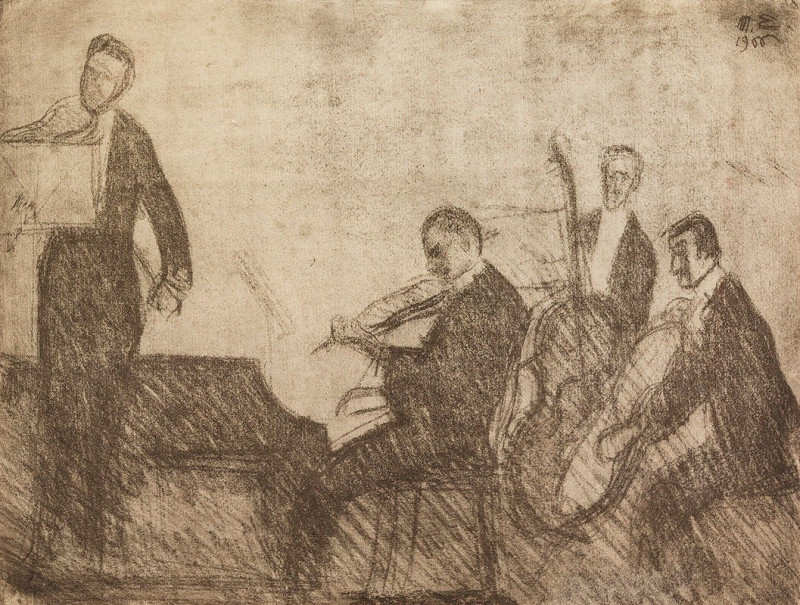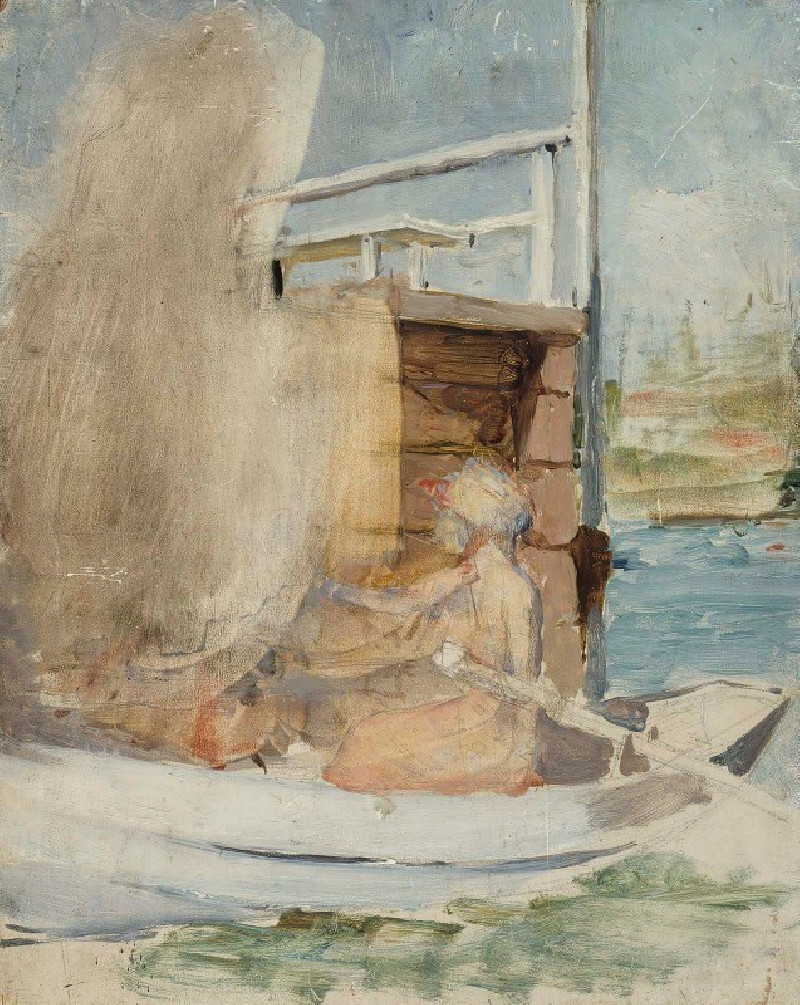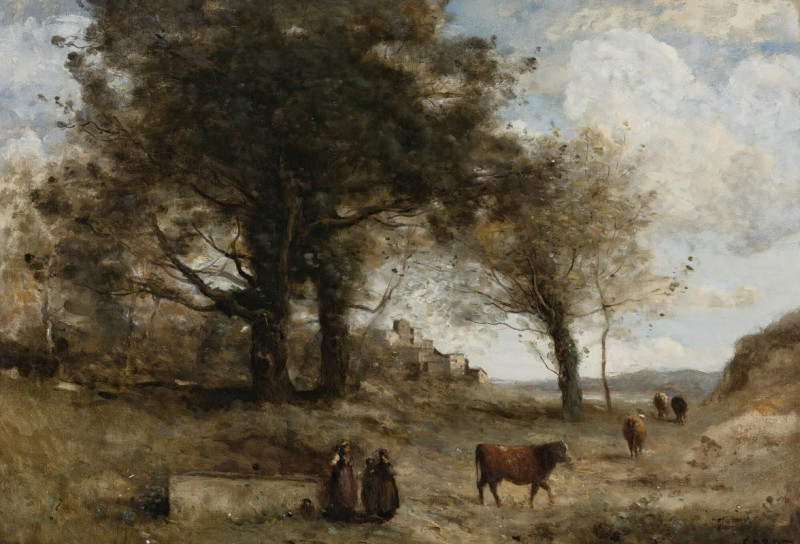Shepherding the Flock, Windy Day (1848)
Technique: Giclée quality print
Recommended by our customers
More about this artwork
Artist: David CoxDavid Cox’s watercolor titled "Shepherding the Flock, Windy Day" offers a vivid glance into the rural landscapes of the 19th century, combined with the dynamic realism of natural elements. This painting was completed in 1848 and is a striking example of Cox’s talent for capturing both the beauty and the ferocity of nature.The scene is set in a vast, open field under a tumultuous sky, where the imminence of a storm is palpable. Thick, swirling clouds dominate the upper half of the composition, rendered in shades of white and grey that suggest the churning movement of an unsettled sky. The lower half features rough, wind-swept terrain with variations of earthy tones that create a sense of the unyielding and robust rural life.At the heart of the composition stands a lone shepherd, diminutive yet poignant against the sprawling landscape. The shepherd is partially hunched, perhaps as an indication of the relentless wind or the burden of his duties. His flock, suggestive rather than detailed, blends into the rugged terrain, emphasizing the harmony between man and nature.David Cox's use of brisk brushstrokes and a moody color palette intensifies the effect of a blustery day, making the viewer almost feel the gusts of wind. This painting not only captures a moment in nature but also reflects Cox’s profound understanding of the atmospheric conditions and his ability to translate these onto paper with emotional depth and technical prowess."Shepherding the Flock, Windy Day" is a powerful reminder of the timeless struggle and symbiosis between humans and nature, showcased through the masterful hands of David Cox.
Delivery
Returns
David Cox (29 April 1783 – 7 June 1859) was an English landscape painter, one of the most important members of the Birmingham School of landscape artists and an early precursor of Impressionism.
He is considered one of the greatest English landscape painters, and a major figure of the Golden age of English watercolour.
Although most popularly known for his works in watercolour, he also painted over 300 works in oil towards the end of his career, now considered "one of the greatest, but least recognised, achievements of any British painter."
His son, known as David Cox the Younger (1809–1885), was also a successful artist.

